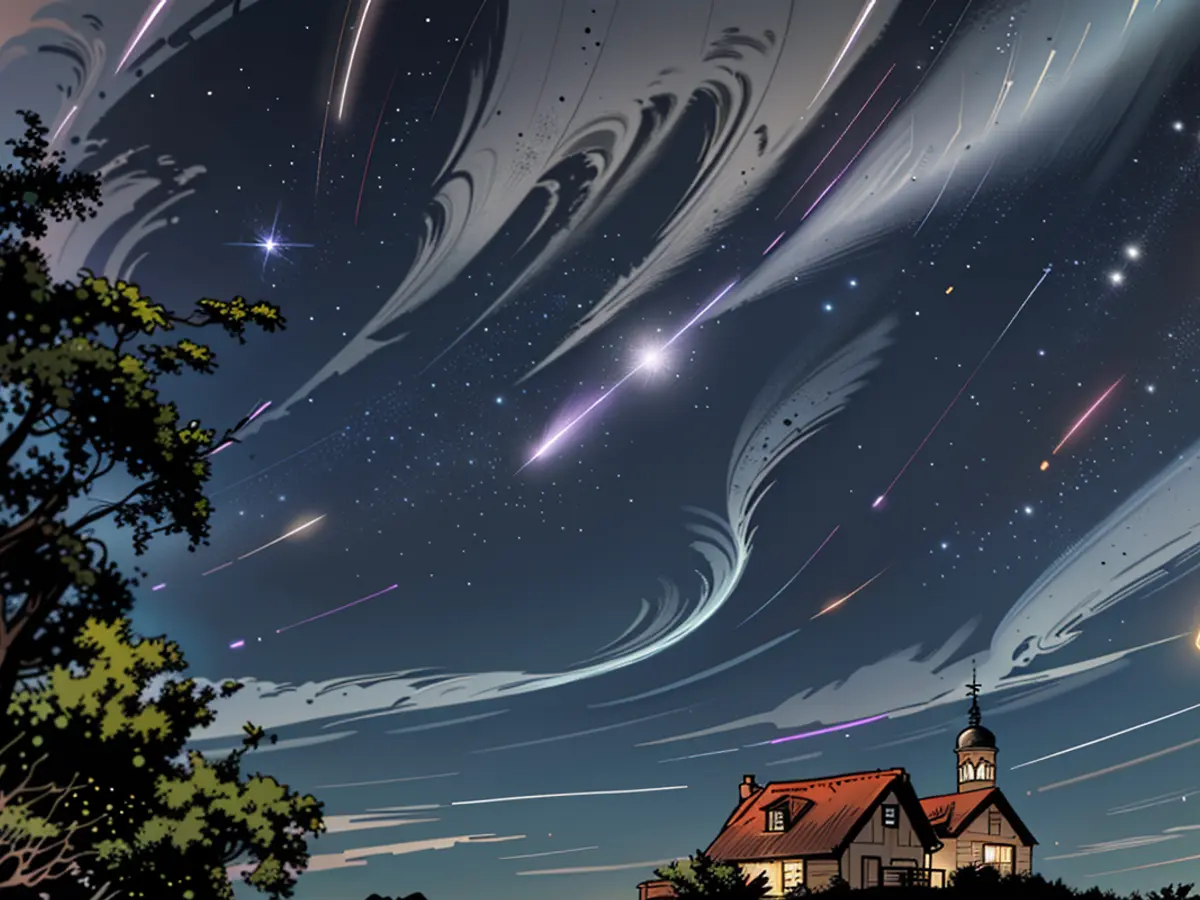When the star-showering rain will shine again
High summer is meteor shower season: Mid-August brings countless meteors visible to the naked eye thanks to the legendary Perseid shower. This year, the meteor storm will be best observed on the night of Monday, August 12th to Tuesday, August 13th. Under clear skies, observers can expect to see a meteor streak across the sky every two minutes.
When are the most meteors visible?
The first Perseids appear in the sky as early as late July, with their numbers increasing before reaching a peak in the afternoon of Monday, August 12th - precisely when it's daylight in Germany. However, according to the German Astronomical Society and the House of Astronomy in Heidelberg, 20 to 30 meteors per hour will still be visible in the nights around the maximum, from Sunday to Monday and from Monday to Tuesday.
The waxing moon sets before midnight and, being low over the horizon, causes little disturbance. The Perseids also often show bright meteors that are visible even in moonlight.
Why are these meteors called "Perseids"?
The August meteors have long marked a fixed date in the astronomical calendar for meteor enthusiasts: the Perseids are the only major meteor shower in summer and one of the most prolific overall. They are named after the constellation Perseus, from which they appear to emanate - a point astronomers call the radiant.
In reality, meteors come from the immediate vicinity of Earth. Each year between mid-July and late August, our planet crosses a cloud of tiny particles left behind by the comet 109P/Swift-Tuttle, which returns every 133 years.
How is the light of these celestial bodies generated?
When Earth encounters the cosmic dust trail of this comet, the often pinhead-sized particles of comet dust enter the Earth's atmosphere at 60 kilometers per second - that's 216,000 km/h. At an altitude of 80 to 100 kilometers, these small dust particles generate the light phenomena we call meteors. In fact, it's not the particles themselves that glow, but the air around them, which is heated by friction.
Larger meteors can shine as brightly as bright stars and planets. Even brighter, but also less common, are the so-called fireballs. These spectacular meteors often leave a colorful, glowing trail behind them.
What do viewers need to observe?
No special equipment is needed to watch the Perseids - a lounge chair or sleeping bag and a good view of the surroundings are sufficient. Binoculars or telescopes are even hindrances when spotting meteors that flash by in seconds.
The best viewing opportunities are found far from light-polluted cities. Those who want to photograph the meteor shower should use a wide-angle lens, mount the camera on a tripod, and choose a long exposure.
Do the Perseids have another name?
By the way, the August meteors are also known as "Laurentiustears" in folklore. This name commemorates Saint Lawrence, who died a martyr's death on August 10, 258, under the reign of Roman Emperor Valerian. Legend has it that it has rained fire tears on this day ever since.
The Perseid meteor shower is famous for its numerous shooting stars, with up to 30 visible per hour around the peak on August 12th to 13th. Even under the light of the waxing moon, bright Perseid meteors can still be seen streaking across the sky.







